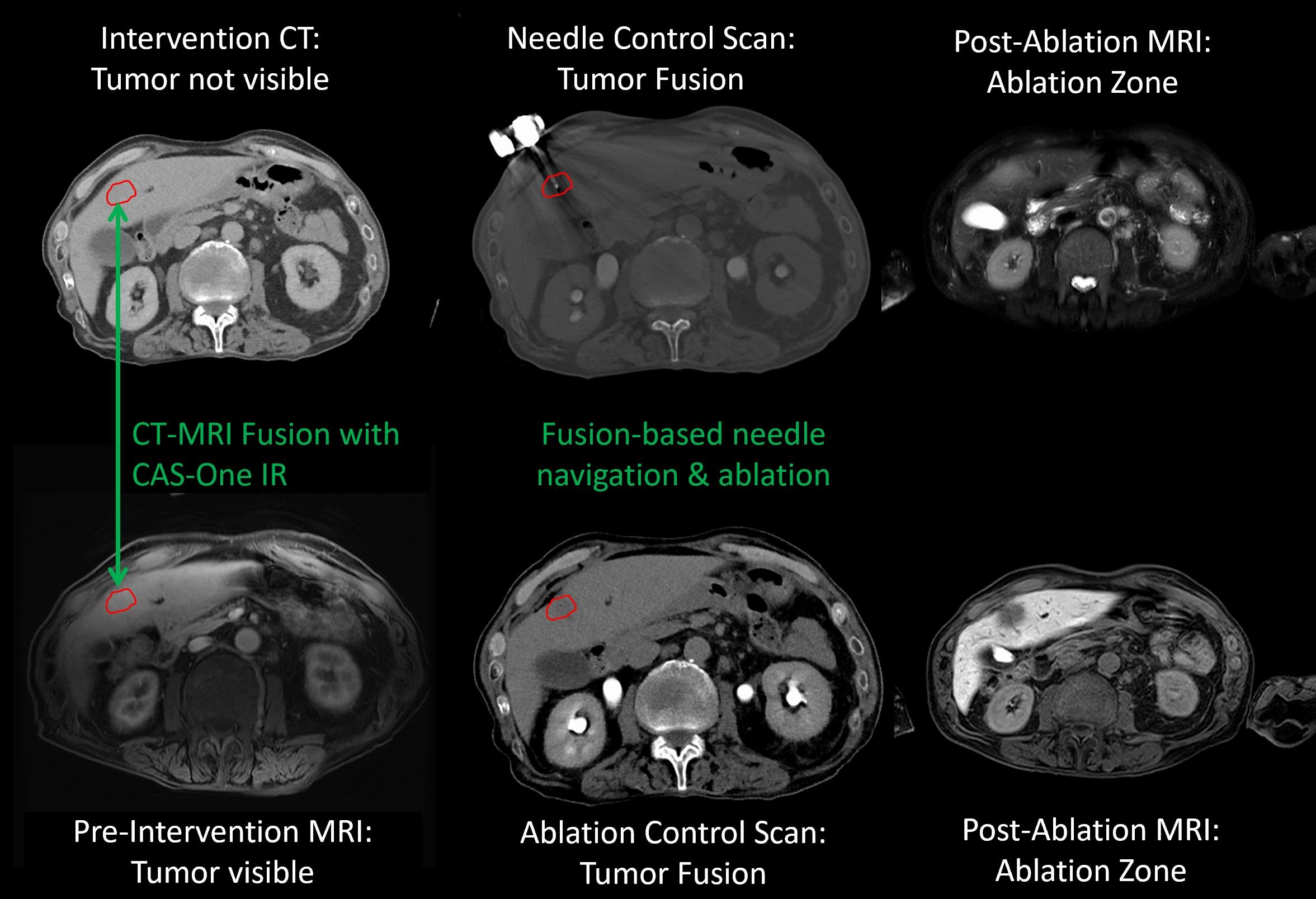Tuesday, 26 March 2019
Ablation of "invisible" CRC metastasis in the liver
Ablation of "invisible" CRC metastasis in the liver
1:54
Navigated Liver Radiofrequency Ablation of Invisible CRC Metastasis with MRI Image Fusion. Thermal ablation allows precise targeting and treatment increasing chance of destroying the tumor completly. The minimally invasive approach also reduces stress on the patient.

Name: Dr. Nadeem Shaida, Consultant Vascular & Interventional Radiologist
Institution: Cambridge University Hospitals NHS Foundation Trust, United Kingdom
Patient age and sex: 65 years, male
Initial condition:
- Rectal cancer 2015 – Chemoradiotherapy 45Gy with Capecitabine
- Anterior Resection – post-operative anastomotic breakdown with recurrent episodes of pelvis sepsis
- Due to these problems the patient refused to consider further surgery
Progression: Single lesion in liver segment IV detected on PET-CT
Treatment:
- Since the patient refused further surgery, two options for treatment were available
- Systemic treatment: Chemotherapy and good chances that tumor control could be achieved, though tumor destruction seems unlikely. At the same time the adverse effects of chemotherapy on the patient have to be considered.
- Local treatment: Thermal ablation allows precise targeting and treatment increasing chance of destroying the tumor completly. The minimally invasive approach also reduces stress on the patient.
- The lesion was visible on MRI only. CT imaging, which is used for ablation, did not show the lesion. Therefore it could not be adequately localised for treatment.
- CAS-One IR enables the fusion of different imaging modalities (CT and MRI) to allow treatment.
- MRI-CT fusion with navigated antenna placement was chosen to be able to accurately target and treat the lesions with minimal side effects.
Conclusion:
Complete ablation of lesion shown on follow up scans
Learn more about the stereotactic navigation system CAS-One IR.


